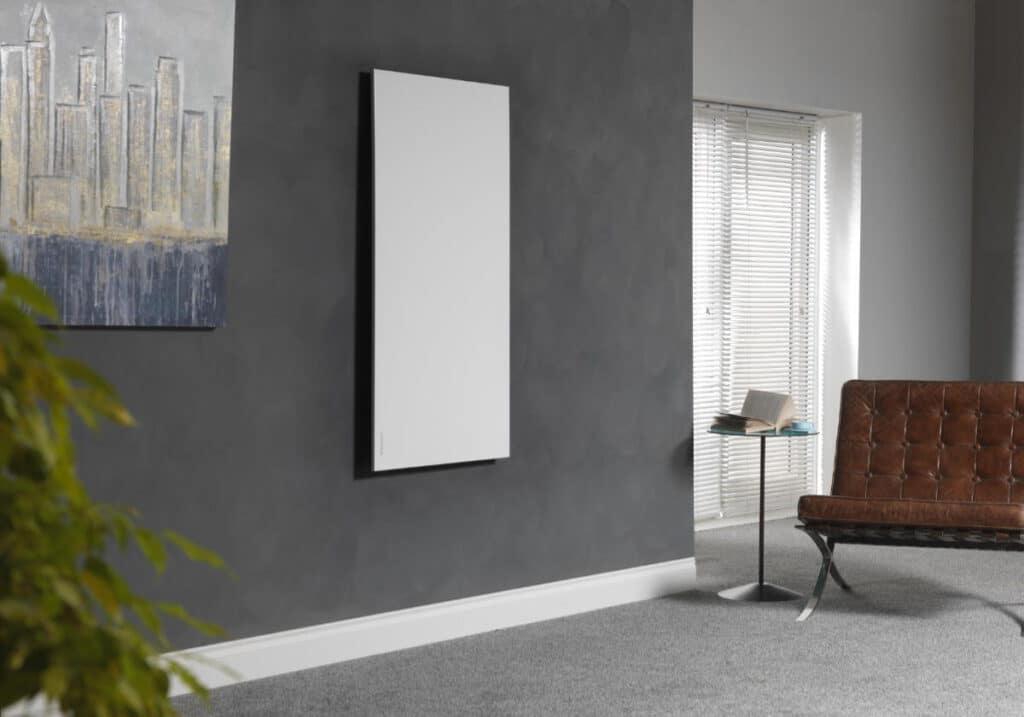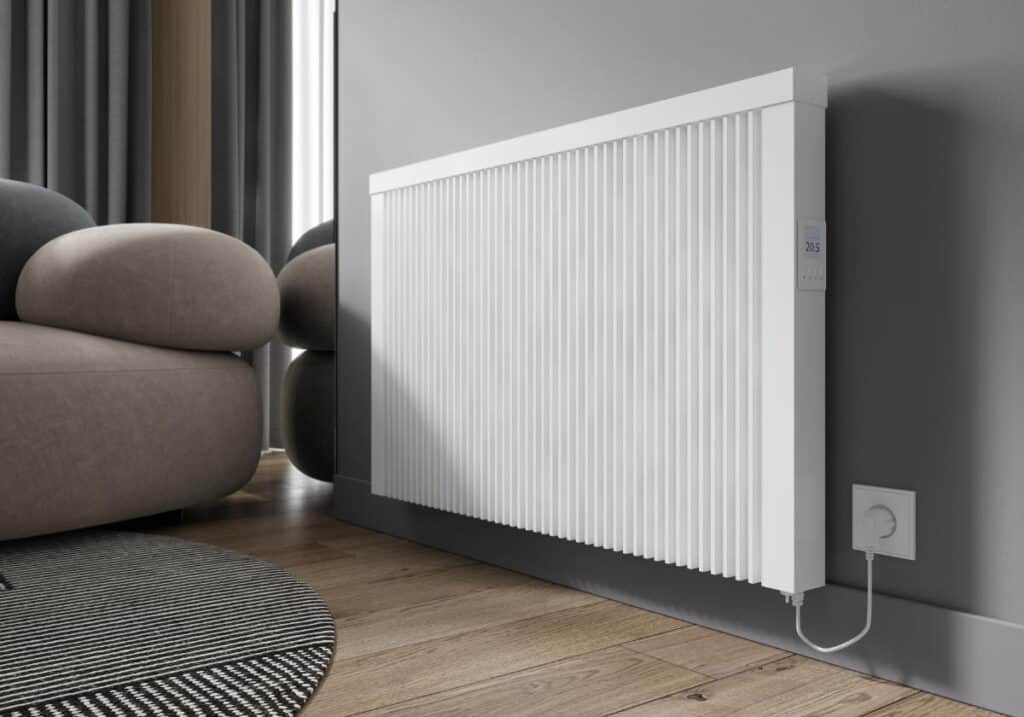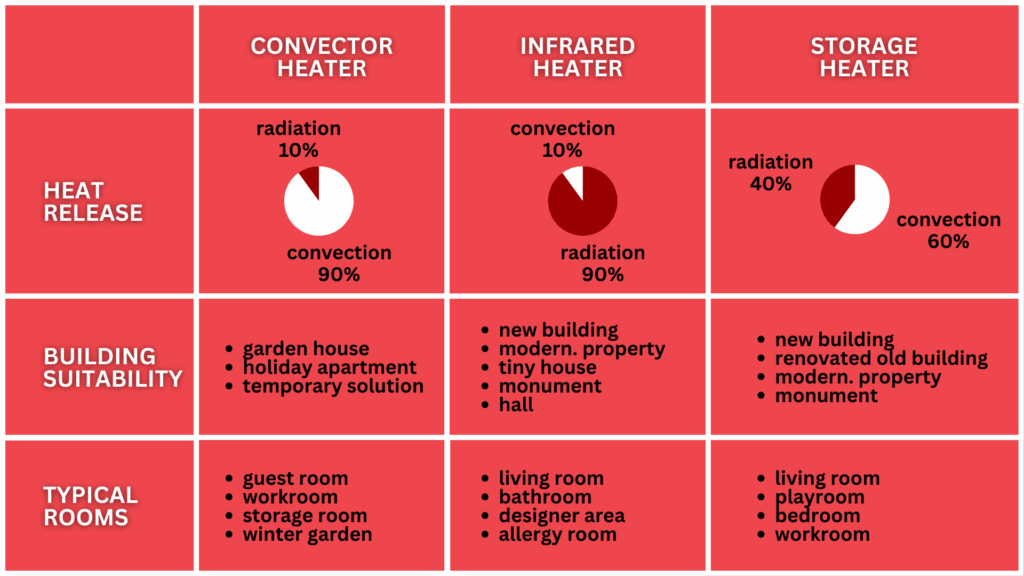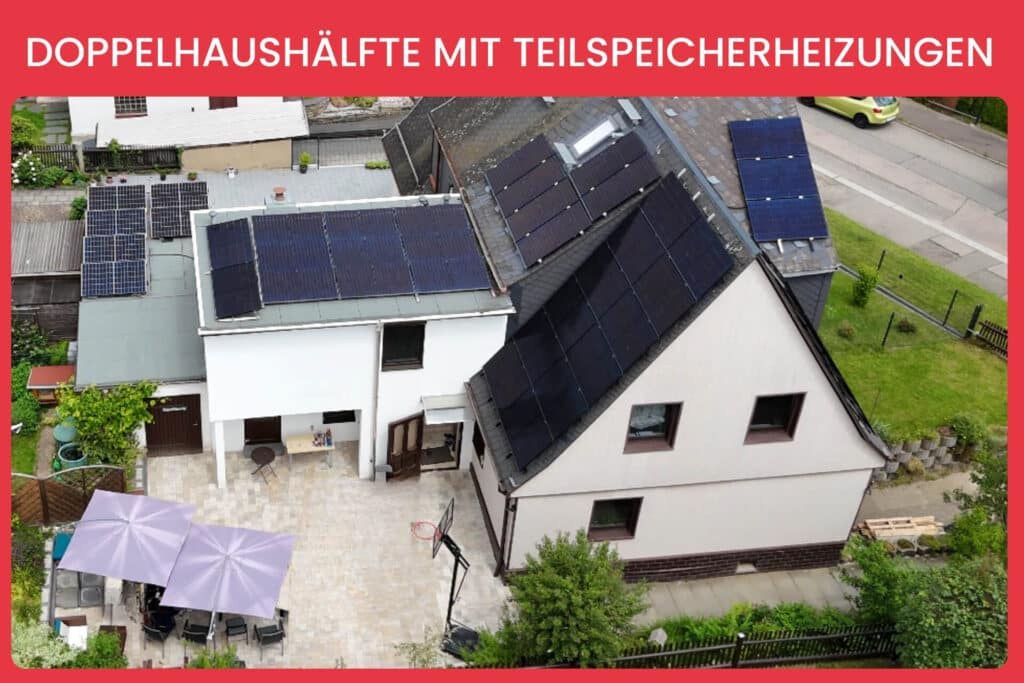Electric heaters are relatively inexpensive and straightforward to install. A wide variety of rooms can be equipped with different models, from busy living rooms to rarely used offices. Here, we compare three classic types: convector, infrared and panel heaters.

Convector heater: quick and easy
A convector heater is inexpensive, lightweight and can therefore be easily mounted on the wall or used as a freestanding unit. The device heats a room quickly and evenly. An internal heating element warms the air flowing past it. The warm air rises, drawing cool air in its place and creating natural air circulation. Depending on its size, a room can be warm in around ten minutes.
A convector heater consumes electricity in real time, making it particularly suitable for small, rarely used rooms. Examples include garden sheds, holiday homes, guest rooms and rarely used studies. Convector heaters are also used as temporary solutions in renovated existing buildings.
Convector heaters usually have an output of between 500 and 2,500 watts and require between 70 and 100 watts per square metre, depending on the building’s structure. With an output of up to 2,000 watts, the heater can usually be plugged into a standard socket; however, for higher outputs, a fixed connection is advisable. Thermostats or timers help the device heat efficiently and precisely without consuming unnecessary electricity.

Infrared heater: an electric heater that provides on-demand heating
Infrared heaters are extremely space-efficient. These slimline devices are almost always ready to plug in and can be easily mounted flat on walls or ceilings. There are also models that serve as decorative accents, such as glass models or models with a picture or mirror design.
This technology works in a similar way to sunlight. Rather than heating the air, infrared rays primarily heat people, furniture and walls. This has a major advantage: the room feels pleasantly warm even when the air temperature is lower. Infrared heaters work efficiently at 30 to 60 watts per square metre, depending on the building’s structure. It usually takes 10–15 minutes for a room to feel comfortably warm. This makes them ideal for rooms that are rarely used. Alternatively, it can heat larger rooms specifically where people are present. This saves energy because the whole area does not need to be heated.
Infrared heaters are suitable for all well-insulated buildings, including new buildings, modernised properties and office buildings. They are also ideal for tiny houses and modular buildings thanks to their space-saving design. Since they can be installed inconspicuously without any structural modifications, they are also suitable for listed buildings. Furthermore, as this technology does not involve air circulation, meaning that no dust is stirred up, it is also ideal for allergy sufferers. Due to the pleasant radiant heat they provide, infrared heaters are often installed in bathrooms and living rooms.

Storage heater: constant heat for several hours
Storage heaters take around 15 to 30 minutes to warm up, but once running, they are very efficient and quiet. Inside the heater is a fireclay or ceramic core that heats up slowly and releases heat into the room, even after the power has been turned off. Just 15 minutes of operation can be enough to keep a room warm for an hour. According to a study by TU Dresden, panel storage heating is more than 30 per cent more energy efficient than infrared heating.
This type of heating requires 50–80 watts per square metre. The radiators are similar in size to traditional models, but significantly slimmer. This makes them ideal for installation close to the floor or under windows. Due to their storage mass, they are extremely heavy, so a stable rail system is recommended for installation.
Storage heaters are particularly well-suited to continuous operation in well-insulated properties, such as new builds or modernised existing buildings. They are typically used in living rooms, bedrooms and studies. In other words, they are ideal wherever uniform heat and quiet operation are required.
Comparison of electric heaters

Conclusion
Each electric heater has its own strengths and areas of application. For example, convector heaters provide rapid heat, infrared heaters offer targeted radiant heat, and storage heaters provide constant output. These systems can be used to meet all requirements in single-family homes and apartment buildings. The devices are inexpensive to purchase and easy to install.
With more than 35 years’ experience in the development and manufacture of electric radiators ‘Made in Germany’, the Lucht LHZ Group is a leading name in the industry. The company’s portfolio includes storage heaters, infrared heaters, and convectors. Lucht LHZ sells electric radiators under the TECHNOTHERM brand. It also offers its services as an OEM partner in 40 countries.


